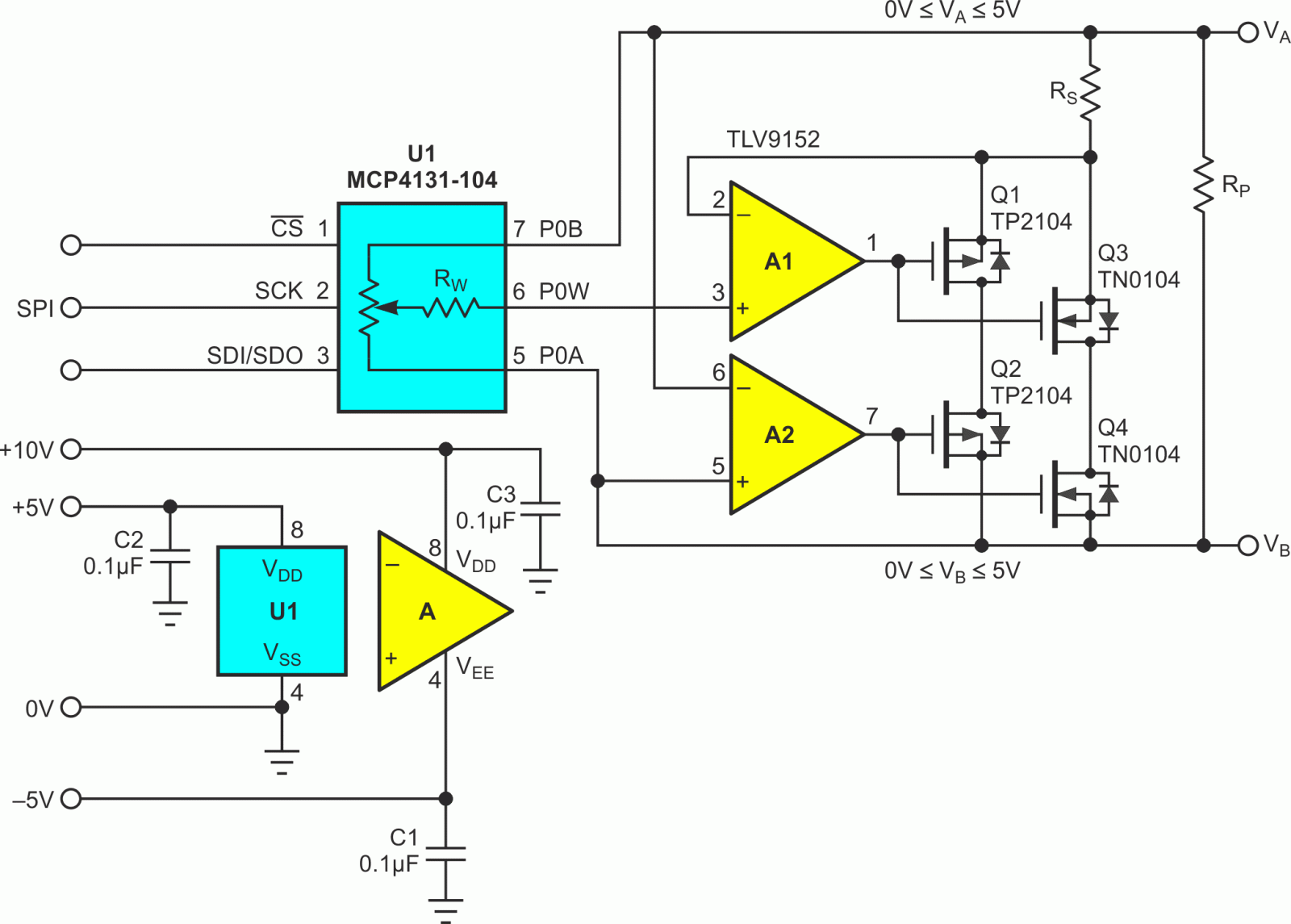The ubiquitous variable resistance circuit network shown in Figure 1…
 |
|
| Figure 1. | Classic adjustable resistance; RMAX = RS + RR; RMIN = RS. |
But a sticky question remains: What if the polarity of the VA – VB differential is subject to reversal? Figure 1 can of course accommodate this without a second thought, but it’s a killer for Figure 2.
 |
|
| Figure 2. | Synthetic Dpot evades problems by using FET shunt, precision fixed resistors, and op-amp; RAB > RMAX; RP = (1/RMAX – 1/RAB)–1; RS = (1/RMIN – 1/RAB – 1/RP)–1. |
A simple – but unfortunately unworkable – solution is shown in Figure 3.
 |
|
| Figure 3. | Simply paralleling complementary N and P channel MOSFETs might look good but won’t work beyond a few hundred mV of |VA – VB|. |
The problem arises of course from the parasitic body diodes common to MOSFETs, which conduct and bypass the transistor if the reverse polarity source-drain differential is ever more than a few tenths of a volt.
Figure 4 shows the simplest (not very simple) solution I’ve been able to come up with.
 |
|
| Figure 4. | Two complementary anti-series FET pairs connected in parallel allow bipolar operation. |
Inspection of Figure 4 shows a couple extra FETs have been added in anti-series with the paralleled complementary transistors of Figure 3, together with polarity comparator amplifier A2. A2 enables the Q1/Q2 pair for (VA – VB) > 0, Q3/Q4 for (VA – VB) < 0.
The TLV9152 with its 4.5-MHz gain-bandwidth, 400-ns overload recovery, and 21-V/µs slew rate is a fairly good choice for this application. Nevertheless, significant crossover distortion can be expected to creep in for low signal amplitudes and frequencies above 10 kHz or so.
Design equations are unchanged from Figure 2.